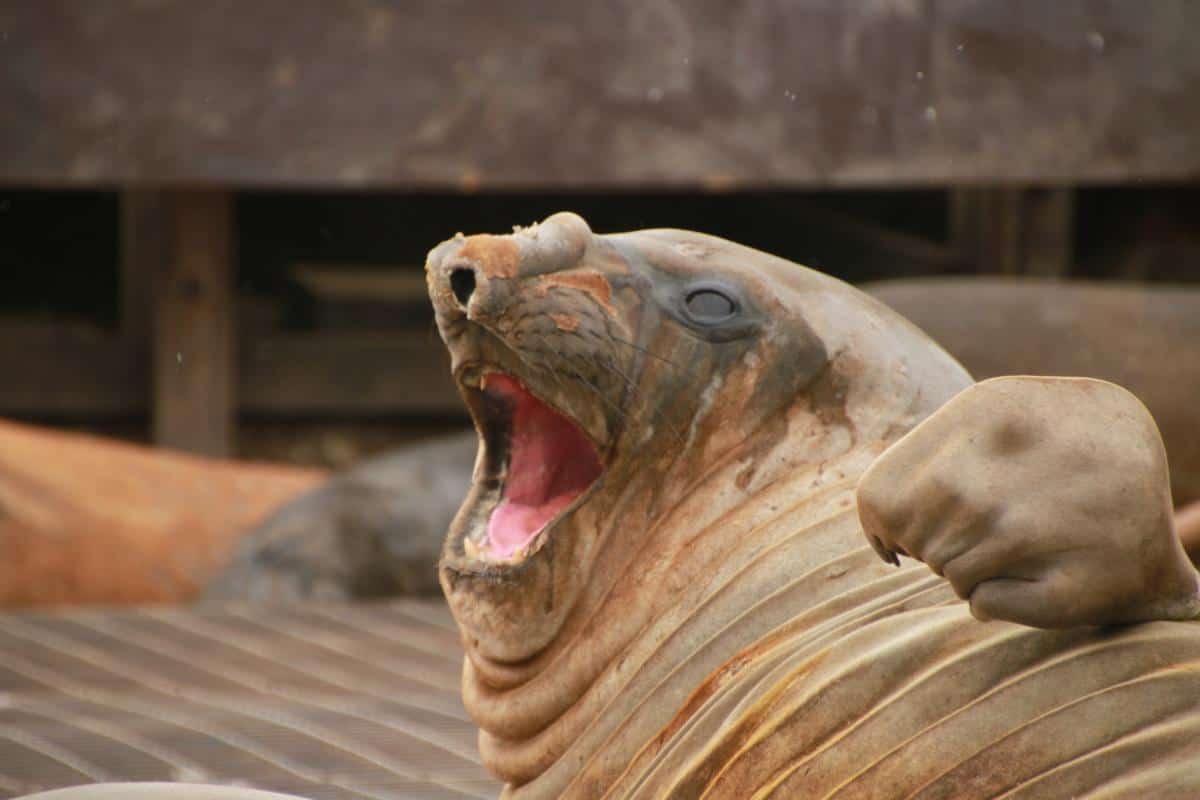Get Closer to Wildlife on a Tall Ship
If you have been captivated by BBC Wildlife programmes like Frozen Planet, be prepared to be blown away by the boldness and sheer numbers of wild creatures that inhabit Antarctica and the rich seas that surround it. With modern digital cameras and wildlife that is totally unfazed and curious about humans, it is surprisingly easy to take wildlife photos as good as the professionals.
Bark Europa is not a big ship compared with modern expedition ships with only about 3m freeboard in the middle of the ship, so when a humpback whale pops his head up to look at you they are damn close and you can feel the spray. You could be sipping a cup of coffee when a fur seal does a back flip right next to you or a skua waddles down the deck looking for trouble.
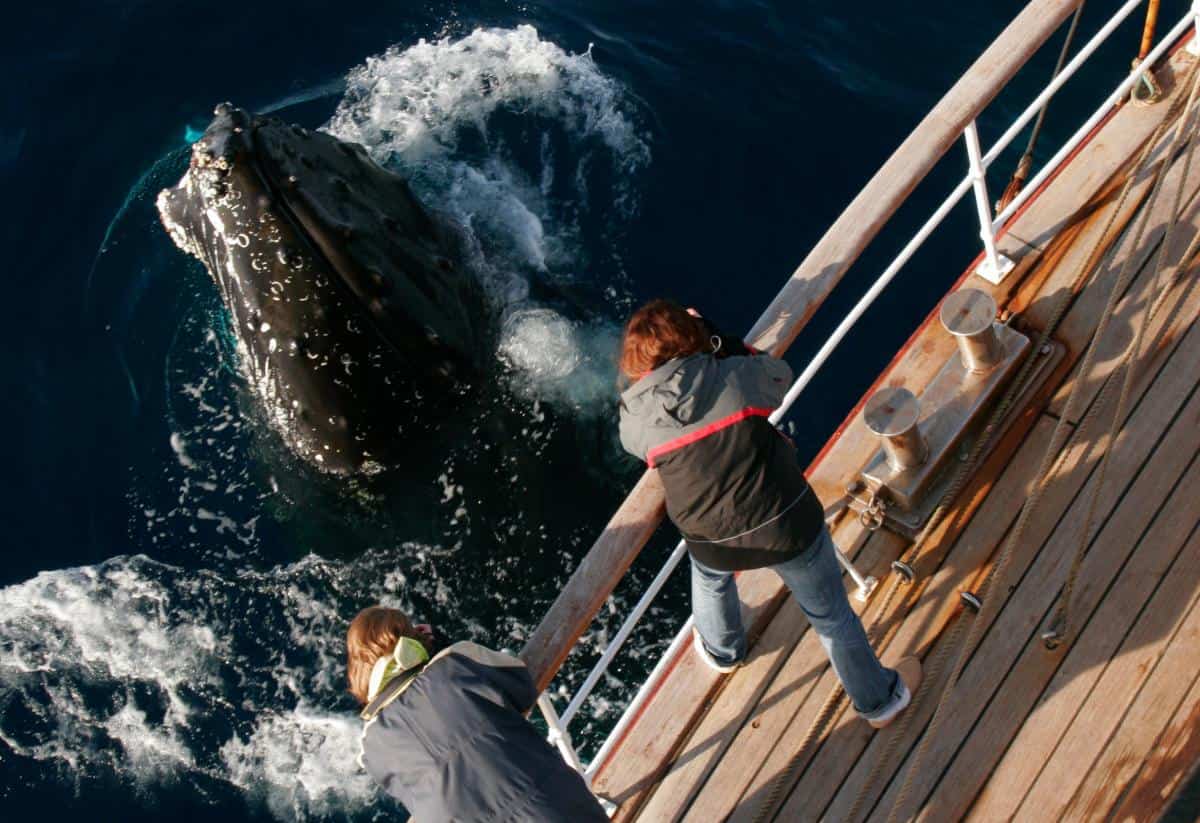
See Antarctic Wildlife from Aloft
Being able to climb the rigging or go out on the bowsprit gives you a view from a different dimension. Look down on Weddle Seals resting on a slab of pack ice with shadows of the ships rigging cutting across the scene, or see whales diving under the ship to check out our barnacles. Whilst sailing at 3-8 knots you can see penguins in their natural element as they porpoise in and out the water, or killer whales as they glide effortlessly by like sleek submarines and overtake a 300 ton sailing ship at speed.
The experience is even better if there is enough room and wind to sail silently between ice floes, with nothing to disturb the wildlife other than our visual presence. Whales seem to have a strange affinity for Europa and often stop to play. I think it might be because there is no engine noise and the great white hull travels at a similar speed, unlike expedition cruise ships in open waters. From a mast platform vantage point it is hard to resist a cry of “Thar see blows, Captain” (and strangely pointless as Europa’s Captain’s have spent years scouring the horizon for cetaceans and are often first to spot whales, and identify what type from the blow characteristics). In the rigging is great for taking photos and you can see where the next whale, leopard seal or penguin is going to surface. The bowsprit is an easier vantage point if you dont have a head for heights.
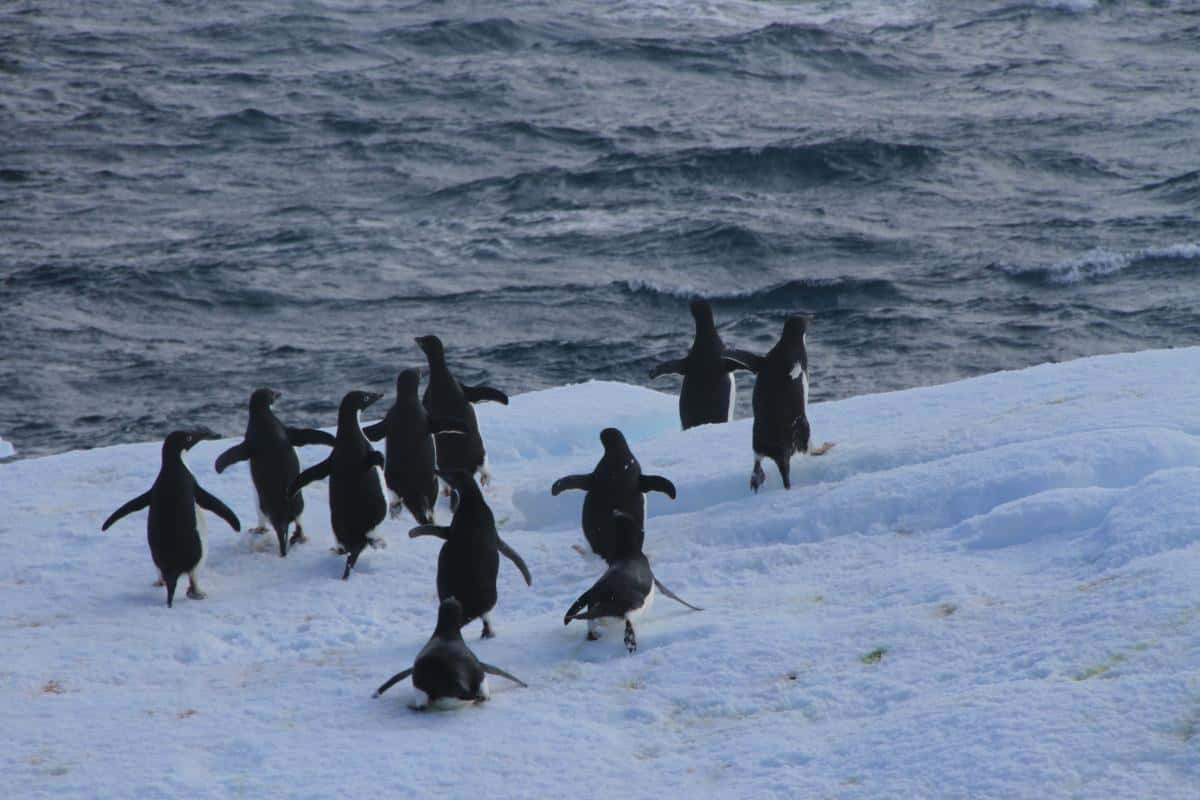
Wildlife Guides and Ships Crew
On the Antarctic and South Georgia Sailing Expeditions including the long ocean voyage at the end of the Antarctic season Georgia, Bark Europa carries two specialist wildlife guides. On other voyages without specific wldlife guides you will find the ships professional crew and captains (Klaas, Eric and Harko) are very knowledgeable all will run lectures and training sessions on a wide range of topics too.
A Europa Wildlife Guide will also be an important member of the ships crew so you are just as likely to be pulling ropes with them in the middle of the night, as learning about save the Albatross programmes or humpback whale research in a lecture. They generally drive the zodiacs and plan all the shore landings and lecture programmes.
Zodiac Safaris and Beach Landings
It is not uncommon for Europa to have 2-3 beach landings in one day where there are special wildlife favourites to see. The Antarctic Treaty regulations limit ship visits to prime sites so it would be very rare to share an anchorage with another vessel, if you see another ship at all. Beach landings can be very entertaining with crowds of fur seals and penguins entering and leaving the surf around you. Europa’s wildlife guides will always brief you on what to see and how to behave around very curious animals ashore but it is still a pleasant shock when they come right up to you. (Penguins don’t read the rules).
Antarctica as an Ecosystem
Antarctica is one of the oldest continents on our planet, but humans have always been unable to live here because of its extremely cold climate. It is the last great wilderness on Earth. The wildlife is fearless of humans so you can end up incredibly close to creatures going about their daily lives in the frozen planet. There are rules for tourists on how to behave near the wildlife to maintain this happy state of affairs….but penguins and elephant seals have not read the rules!
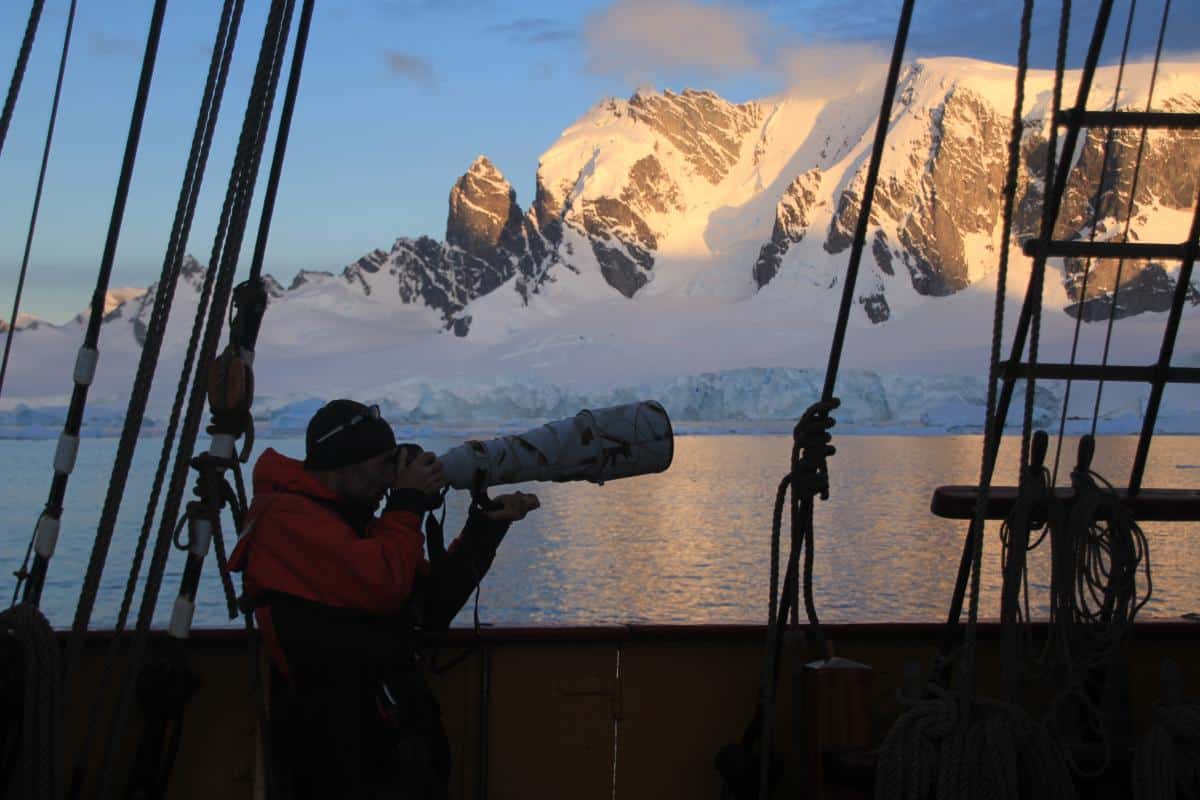
Penguins
All penguin species are restricted to the Southern Hemisphere, but the greatest concentrations are on Antarctic coasts and sub Antarctic islands; On the Peninsula Gentoo and Chinstrap Penguins are the most common. Near the colder Weddell Sea we also find Adelie and Emperor Penguins, although the Emperor penguin is seen more rarely.
On the island of South Georgia you will see King Penguins in their millions and Macaroni Penguins with the tufted crest. Check out our pages on South Georgia as the climate is warmer, the island is not completely surrounded by sea ice in winter and supports a broader range of wildlife and becomes the breeding ground for a large number Southern Ocean species of birds and mammals.
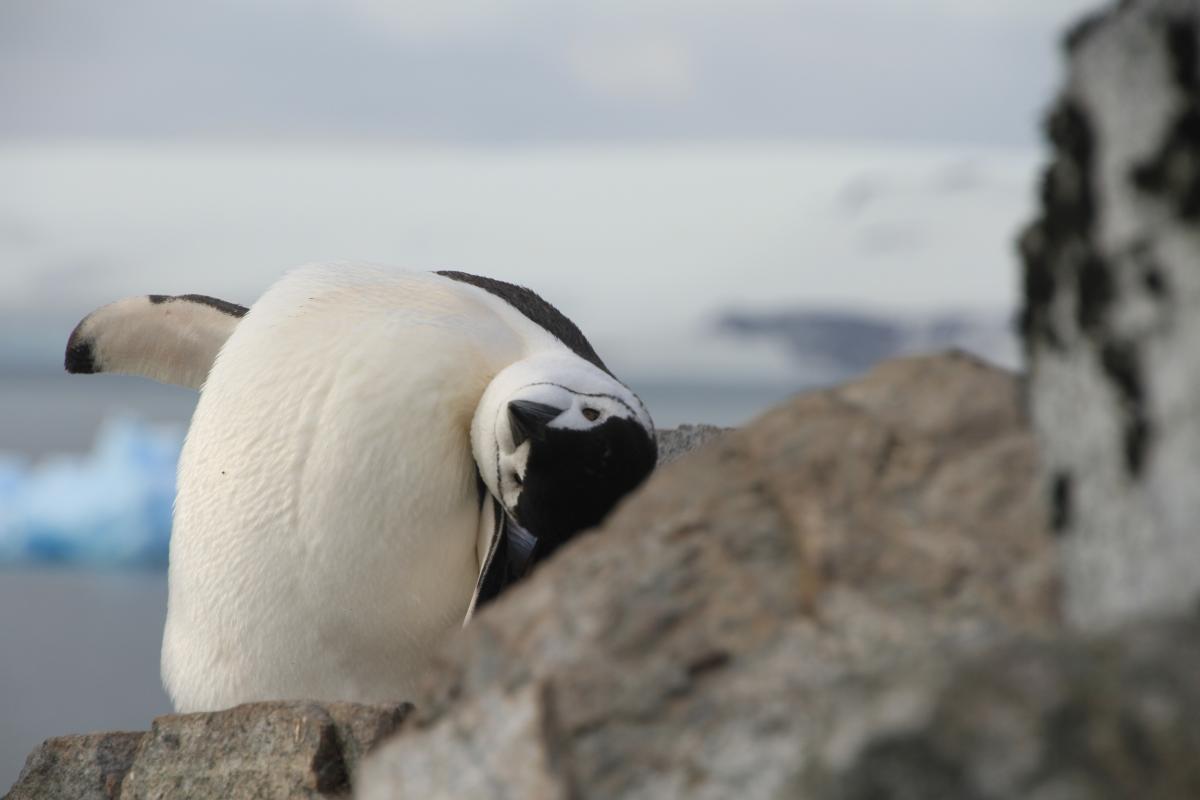
Seabirds
The Antarctic waters support a vast variety of seabirds. Only a few species are adapted to breed regularly on the continent. Skuas are widespread and prominent in the Antarctic. They prey heavily on the eggs and chicks of penguins and small petrels. Also prions, fulmars, and shearwaters are often seen, as well as terns, sheathbills, and two species of cormorants. Europa has to be very careful at night as the lights of the ship can attract birds which can stun or injure themselves in the rigging. In some anchorages we have to put the metal shutters on the deck house windows at night and rescue any surprised birds for re launch in the morning light.
Albatrosses are not found down around the Antarctic Peninsula but you will find them in the Drakes Passage and on the Falklands and South Georgia.
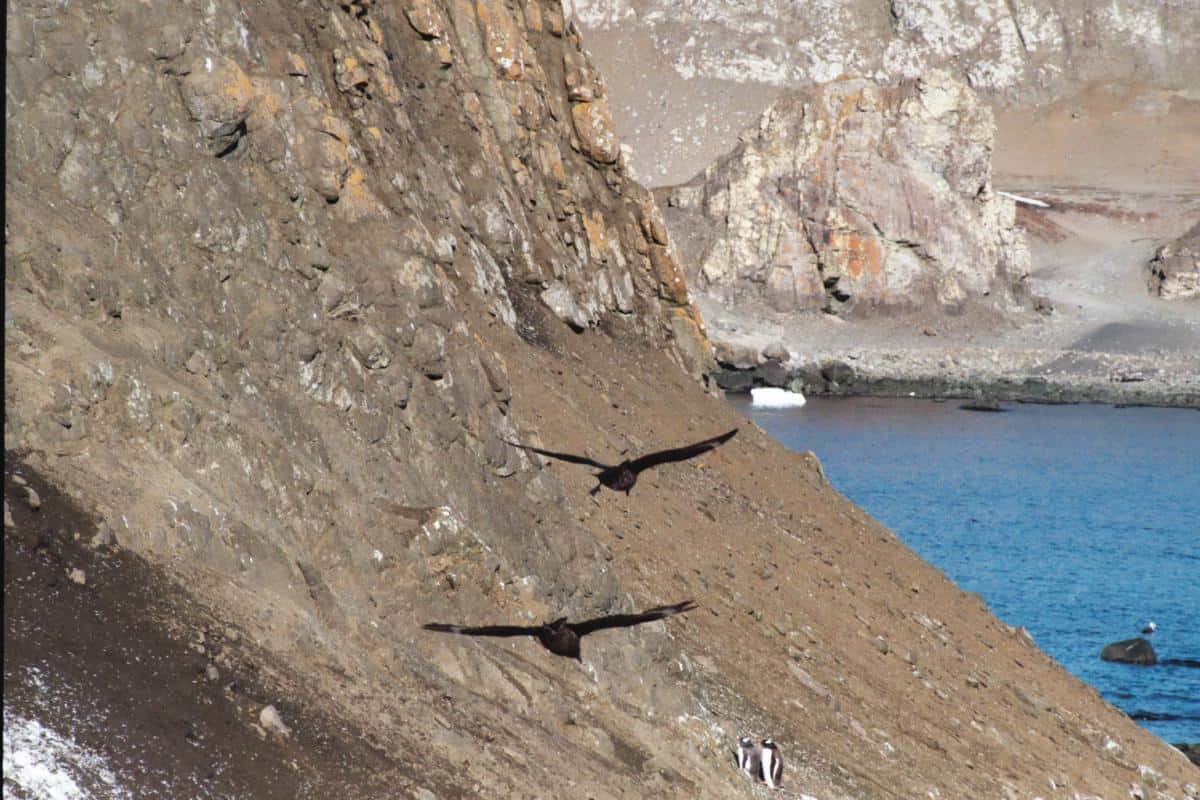
New Southern Ocean Wildlife Sanctuaries
In 2017 the first Antarctic Ocean Wildlife Sanctuary was created in the Ross Sea and pressure groups and sympathetic Governments are pressing for another in the Weddell Sea and around the Antarctic Peninsula. If you want to add your name to the campaign you can check out Greenpeace Antarctic Sanctuary Campaign
Fish and krill in the Antarctic are important components of the marine ecosystems. Factory size ships can hoover up krill in huge quantities in the Southern Ocean which can have a devastating effect on the whole ecosystem. Krill is a major prey for higher predators, including the baleen whales, as the Humpback, Minke and Fin Whale.
Whales and Dolphins
Antarctic in the Southern hemisphere summer is a rich feeding ground for whales. Humpbacks make a regular appearances with acrobatics and feeding frenzies. They also seem to like Europa and have great fun diving under the ship and coming up to eye ball you. and huge fin whales occasionally cruise on by. The Orca or Killer Whale tends to hunt and live in small pods and a sighting is a major highlight….although a bit scarey if you are in an inflatable boat.
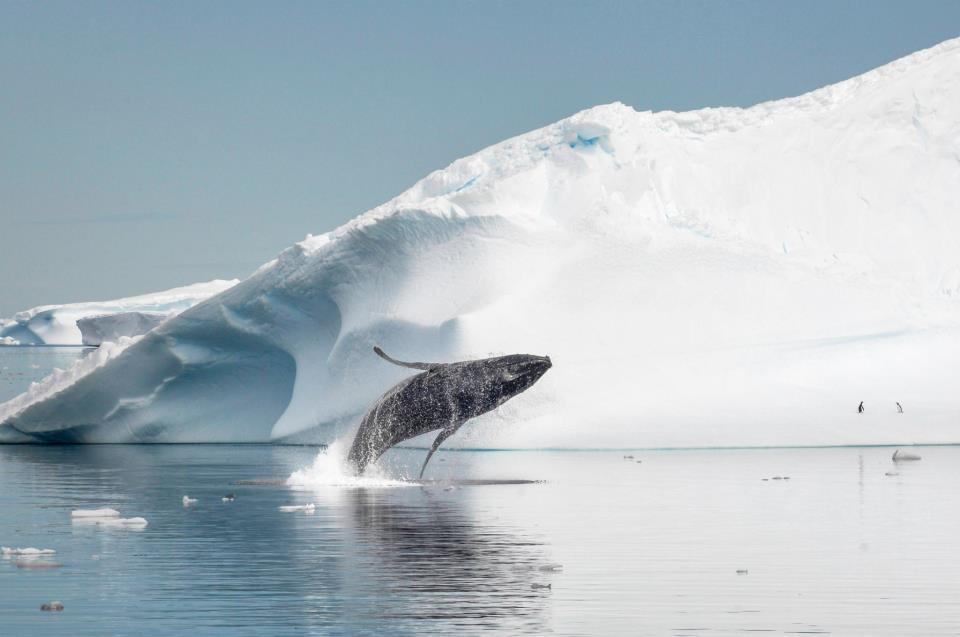
Dueling Elephant seals, Penguin tossing leopard seals, and more
The seals in Antarctica are awesome and sometimes come a bit too close. Depending on the species seals feed on fish and squid or krill. The Leopard Seal is a predator of penguins and other seals. It seems to revel in the chase, often tossing penguins and then snatching them again.
Fur seals are everywhere and very different from the seals we see in Europe. Muscular and fast they can porpoise out the water like dolphins and love to do back flips. There are thousands breeding on South Georgia and walking across the beaches between harems can be quite challenging with huge beach master males fighting with young pretenders. The Ships guides teach you how and where to walk and how to be assertive enough to scare off any fur seal that makes a charge at your kneecaps.
Elephant seals are the huge mountains of blubber that are easily mistaken for a rock. Never go between them and the waters edge as they can move quite fast. The males have huge proboses (noses) and fight each other in the breeding season. The females are smoother and quite cute looking.
Weddell Seals can be found out on the ice flows.
Seals can leave the water and move on dry land to breed, rest and moult.
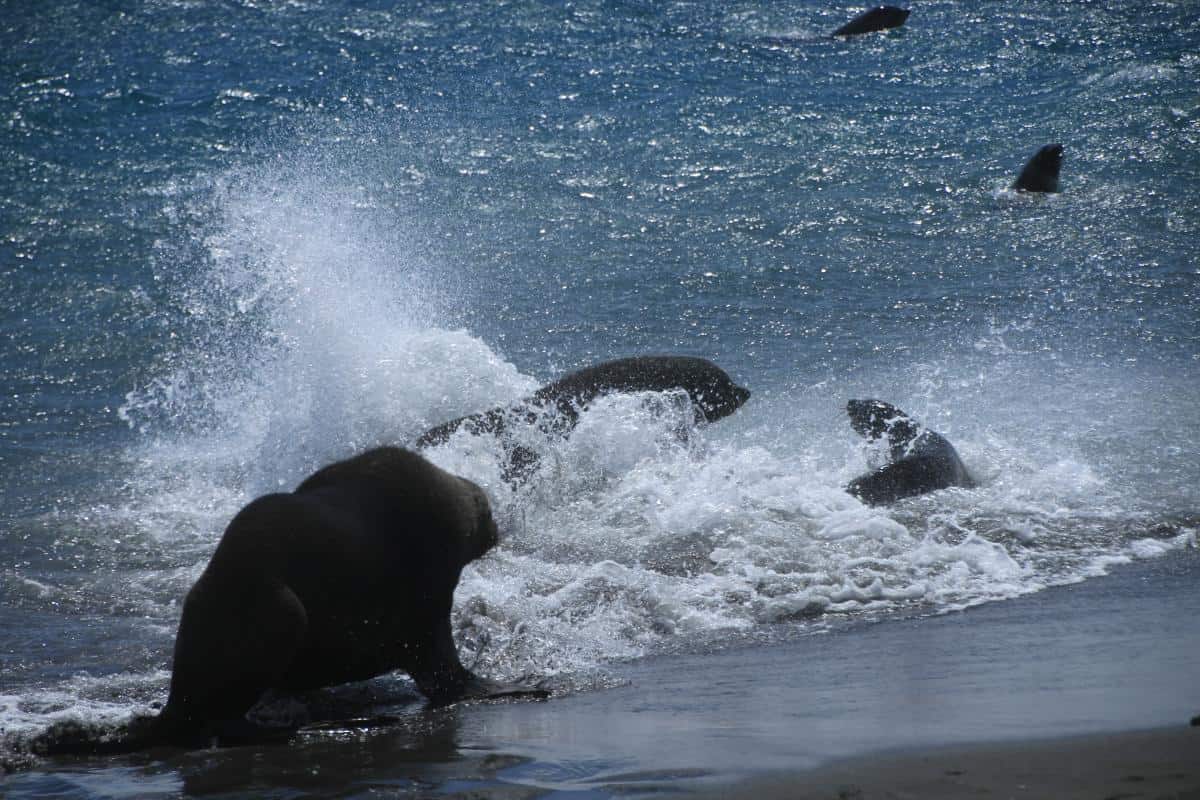
The big difference between Antarctica and South Georgia is Flora
The greater part of the Antarctic continent is covered by permanent ice and snow. Less than 1% is available for colonisation by plants. Most of this ice and snow free land is found along the Antarctic Peninsula. There are no trees or shrubs and only two species of flowering plants; Antarctic Hairgrass and Antarctic Pearlwort are found. The vegetation is predominantly made up of lower plant groups (mosses, liverworts,lichens and fungi).
On South Georgia there are coarse grasses, kelp in the ocean, mosses.
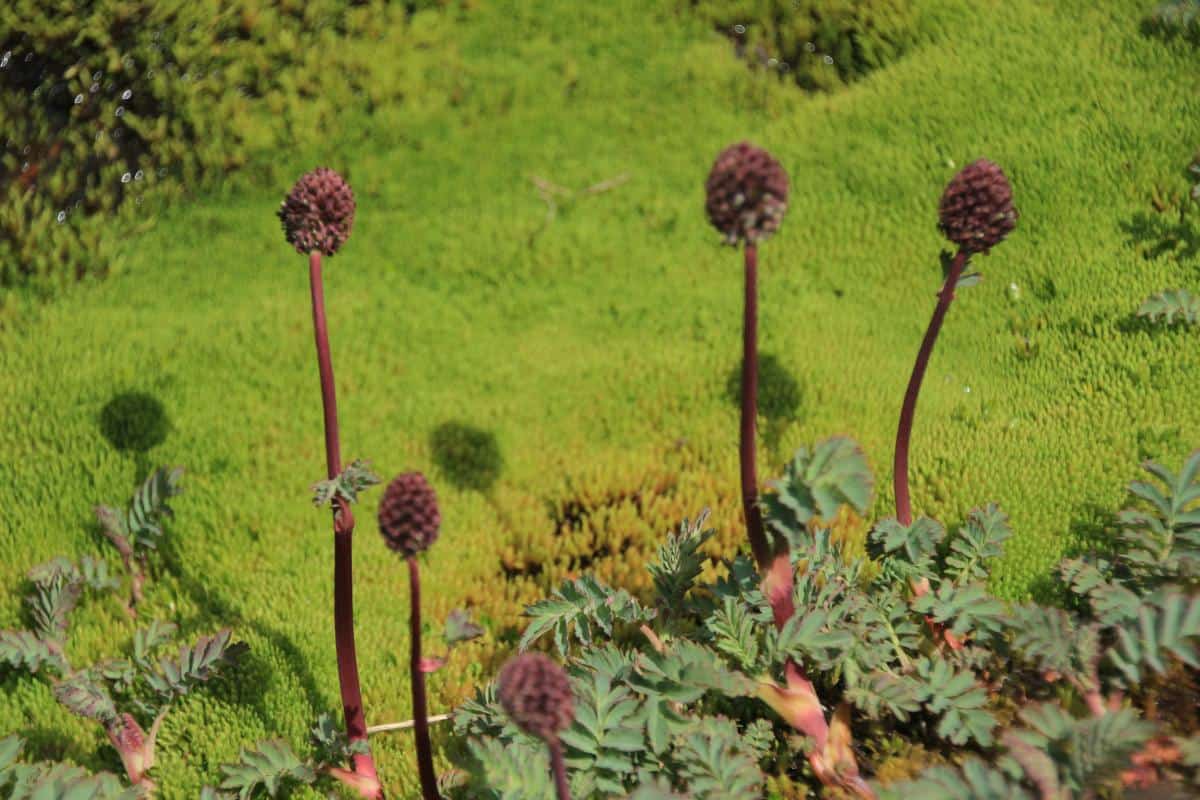
Antarctic Wildlife in Specific Regions
Drakes Passage & Southern Ocean Wildlife
In the Beagle Channel, Drakes Passage and South Atlantic you will be accompanied by many types of albatross (e.g. Black browed Albatross, Wandering Albatross), cape petrels, white chinned petrels and tiny Wilson’s storm petrels – soaring low over the waves and circling the ship. Europa’s wildlife guide will help you identify these impressive birds of the Southern Ocean.
The sea temperature dips as you cross the Antarctic Convergence Zone and the likelihood of seeing icebergs increases and lookout duty becomes both a joy and a worry. Fortunately between 59 and 61 degrees latitude south the summer nights are short and the adrenalin of looking for looming white bergs keeps most lookouts warmer ! As the seas around Antarctica are rich in krill sightings of Humpback Whales, Fin Whales, Sperm Whales, Orcas and Commaren’s Dolphins are all likely possibilities.
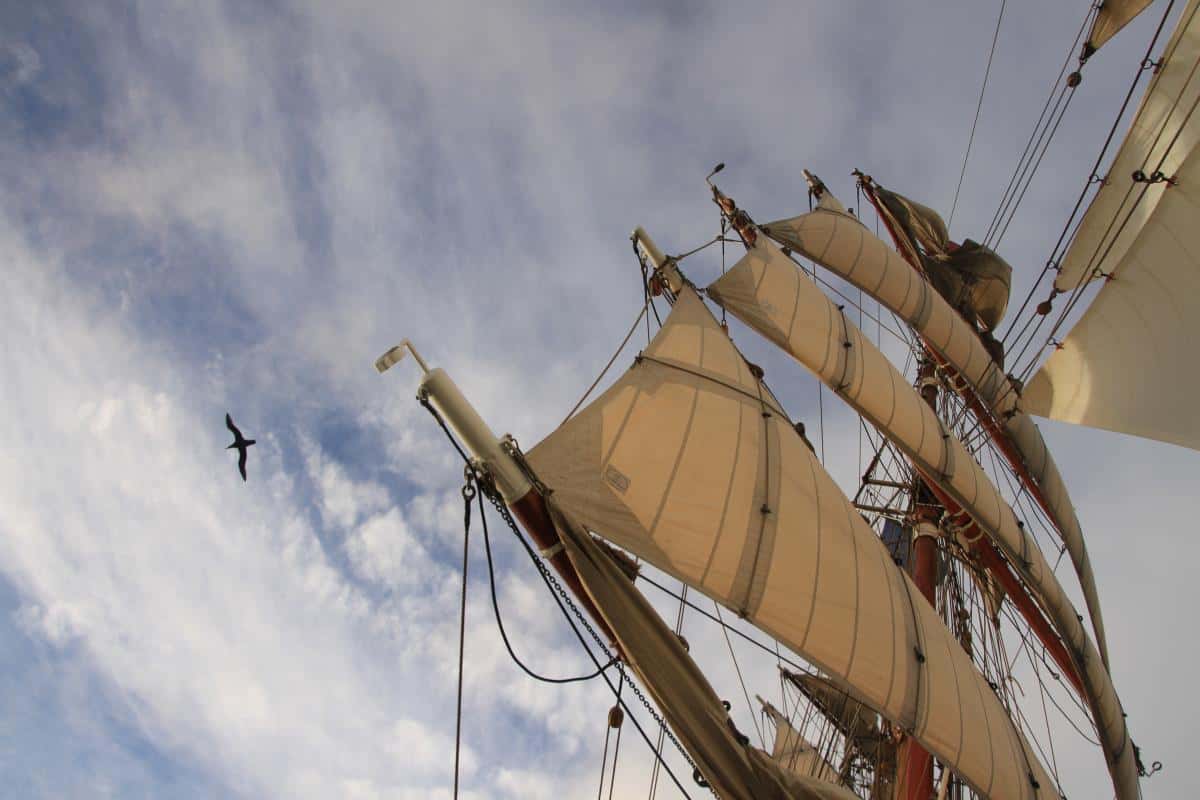
Antarctic Peninsula and South Shetlands Wildlife
There are less flying birds in Antarctica compared with the breeding cliffs of South Georgia, but this is more than compensated by the penguin antics. South Shetland Islands are famous for Elephant seals, colonies of chinstrap and gentoo penguins, patrolling leopard seals and killer whales. Giant petrels breed and skuas fly over the pengiun colonies looking for unattended eggs. This is a land of life, death and survival of the fittest. See penguins and seals in their element as they porpoise alongside the ship, easily overtaking us and showing us the way ashore.
On anchor watch (voluntary) in the moonlight listen to the penguins – a sound that will never leave you, and the barks and howls of fur seals. Ice often tinkles along the hull with a slight current or movement from a glacier carving.
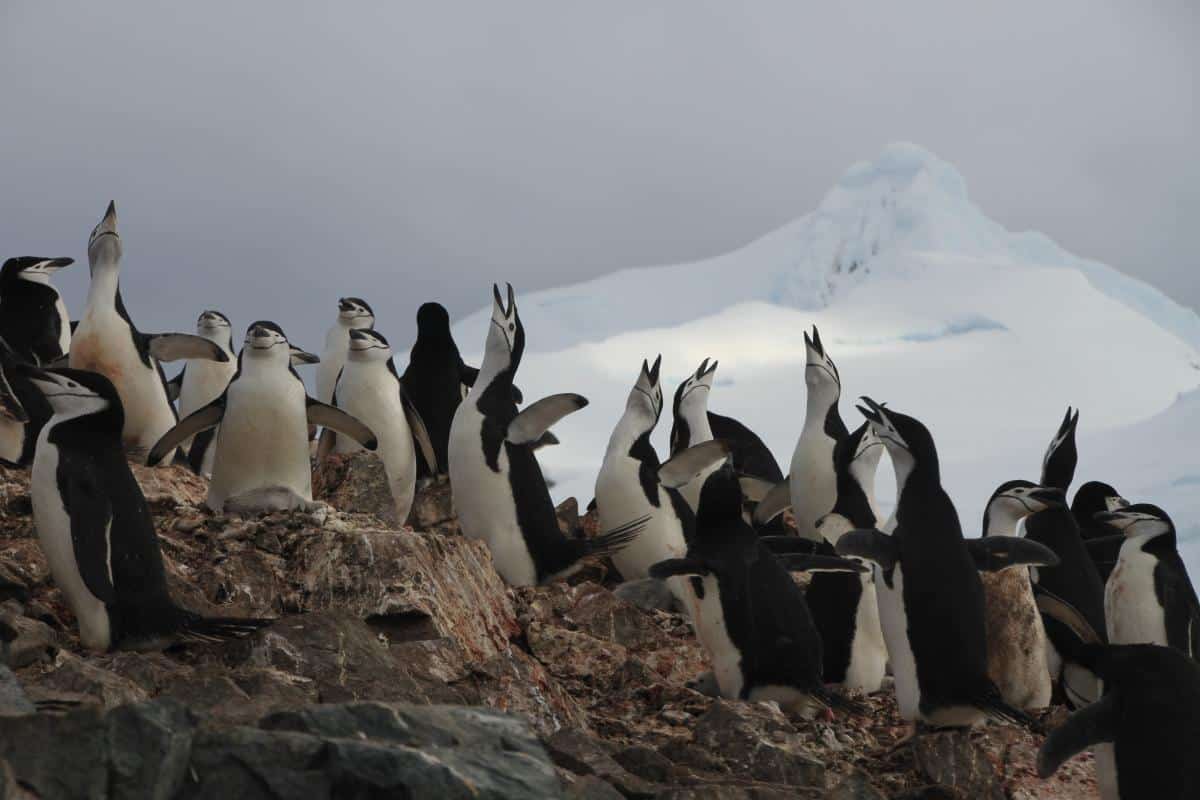
Weddell Sea & South Orkney Wildlife
East of the Peninsula where you are closer to the Larsen Iceshelf, or well south of South Georgia in the remote South Orkney archipelago you start to see different species like Adele Penguins and snow petrels. The Weddell Sea is the Iceberg factory of the Southern Ocean so the ship has to be careful not to get stuck in the more narrow sounds. Weddell seals are the masters of the sea ice so you often see them hiding from pedators ontop of ice flows. Their young have the classic cute white fur that we always think of for seal pups. Leopard Seals are all teeth and menace, and dont be surprised to see a bit of blood, gore and ‘penguin tossing.’
Will my trip harm or disturb the wildlife ?
All activities in Antarctica are regulated by the Antarctic Treaty and its associated measures, including the Protocol on Environmental Protection to the Antarctic Treaty.
The industry is largely managed by the International Association of Antarctica Tour Operators (IAATO), which was founded in 1991 by seven private tour operators involved in Antarctic tourism. It is now an organisation made up of more than 102 member companies that aim to advocate, promote and practice safe and environmentally responsible private travel to the Antarctic. Large cruise ships have been banned. Europa has been a member for over 11 years.
